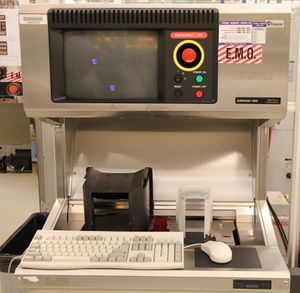Surface Analysis (KLA/Tencor Surfscan): Difference between revisions
Jump to navigation
Jump to search
Content deleted Content added
| Line 36: | Line 36: | ||
**''You must water-mount your small sample or wafer(2inch or 3 inch) to a 4-inch wafer.'' |
**''You must water-mount your small sample or wafer(2inch or 3 inch) to a 4-inch wafer.'' |
||
*[[Wafer scanning process traveler|Wafer Particle Count - Process Traveler]] |
*[[Wafer scanning process traveler|Wafer Particle Count - Process Traveler]] |
||
Very detailed instructions. |
|||
===Other Documentation=== |
===Other Documentation=== |
||
Revision as of 18:45, 27 September 2024
| ||||||||||||||||||||||||||
About
This system uses a laser-based scattering method to count size and distribution of particles (or other scattering defects) on a flat wafer surface.
It can scan wafers in size from 4 to 8 inches. Piece-parts are more difficult but can be scanned with a custom recipe.
4-inch wafers are the most standard size to measure.
For measuring very low particle counts accurately, purchase "low particle count" (LPC) wafers from a Silicon wafer vendor, and keep the wafers in the case and clean at all times until use.
Documentation
Operating Procedures
- Wafer Scanning Instructions
- This is the procedure Staff uses to calibrate particle counts on our deposition tools.
- Surfscan instructions [wafers different size, and pieces]:
- You must water-mount your small sample or wafer(2inch or 3 inch) to a 4-inch wafer.
- Wafer Particle Count - Process Traveler
Very detailed instructions.
Other Documentation
- Operations Manual
- For detailed measurement info, it is highly recommended that you read the manual.
Examples
| Gain 4: Small Particles
(0.160µm – 1.60µm) |
Gain 2: Large Particles
(1.60µm – 28.0µm) |
|---|---|
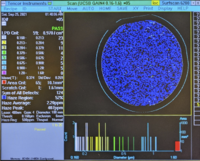
|
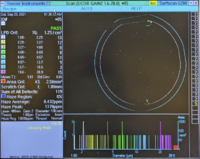
|
| Gain 4: Small Particles
(0.160µm – 1.60µm) |
Gain 2: Large Particles
(1.60µm – 28.0µm) |
|---|---|
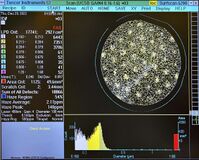
|
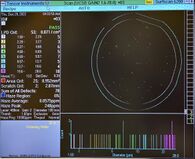
|
